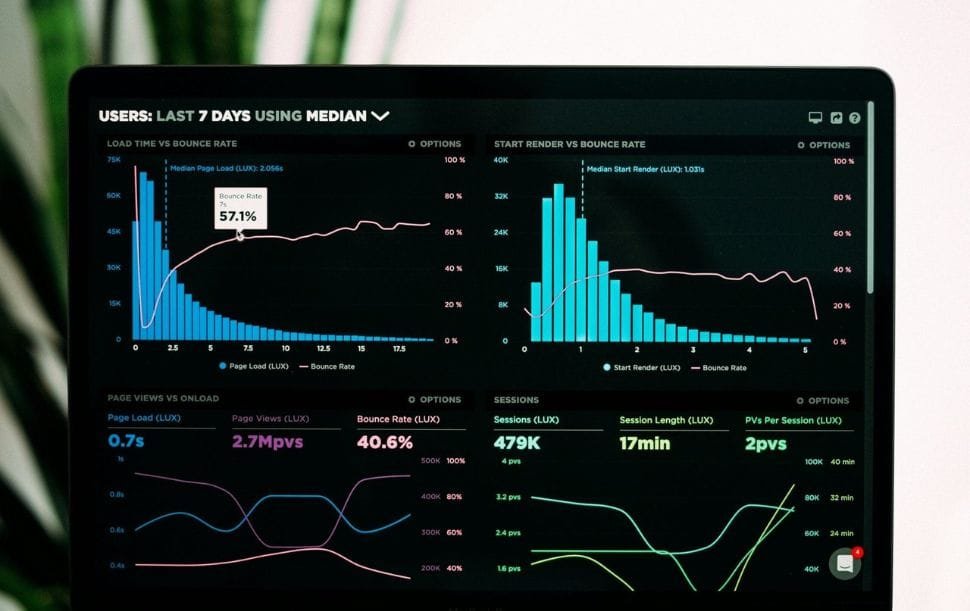
Comparison Of ROI And ROAS: Tips To Make It Better
Defining Return on Investment (ROI) and Return on Advertising Spend (ROAS)
ROI and ROAS are vital financial metrics that assist businesses in evaluating their performance. This becomes important particularly in the realm of digital media. Understanding these two concepts can enhance decision-making processes associated with marketing investments and financial strategies.
ROI is a broader measure that quantifies the return or earning from an investment relative to its cost. It is calculated with the following formula: ROI = (Net Profit / Cost of Investment) x 100%. This calculation not only reveals the profitability of an investment but also serves as a tool for comparing the efficiency of several investments. A higher ROI indicates that less money is being lost in unprofitable investments, thereby improving overall financial performance.
On the other hand, ROAS focuses specifically on the effectiveness of advertising campaigns. We measure the revenue generated for each dollar spent on advertising. The formula for calculating ROAS is straightforward: ROAS = Revenue from Ads / Cost of Ads. This metric is particularly useful for assessing the direct financial impact of advertising efforts within digitales media. A higher ROAS reflects a more efficient use of advertising resources. It can influence how budgets are allocated in future campaigns.
Both ROI and ROAS provide critical insights into a company’s financial health and marketing efficiency. ROI gives a general overview of profitability across all types of investments. ROAS allows for a more granular understanding of marketing return in relation to advertising expenditures. Understanding these differences can equip business leaders with the knowledge needed to optimize their approaches to maximize financial performance in an increasingly competitive environment.
Comparative Analysis of ROI and ROAS
Return on Investment (ROI) and Return on Ad Spend (ROAS) are both essential metrics. These metrics are widely in use to evaluate the effectiveness of marketing strategies; however, they serve distinct purposes in the financial analysis of business growth. Understanding their key differences and similarities can help organizations make informed decisions regarding their digital media expenditures.
ROI measures the overall profitability of an investment, calculated using the formula: (Net Profit / Cost of Investment) x 100. This metric includes all revenues and costs associated with the investment, providing a comprehensive view of its success. ROI is especially useful for evaluating long-term projects, product launches, or capital investments, as it reflects the overall business health and sustainability.
In contrast, ROAS focuses specifically on the revenue generated from ad campaigns relative to the cost of those campaigns. The formula for calculating the same is: Revenue from Ads / Cost of Ads. This metric helps businesses analyze the effectiveness of their advertising efforts more directly. Thus, making it an invaluable tool for digital media strategies that aim for short-term gains. While both metrics gauge financial performance, they offer different insights depending on the context of their application.
There are scenarios where one metric may be more advantageous than the other. For example, if a company is primarily interested in understanding the profitability of a new advertising campaign. ROAS would be more relevant as it assesses the immediate impact of advertising expenditures. Conversely, if the focus lies on evaluating overall business performance over time, ROI would be the more suitable metric. It encompassing broader operational factors.
Ultimately, both ROI and ROAS have their place in financial assessments. Utilizing these metrics can assist businesses in refining their marketing strategies, optimizing digital media investments, and making data-driven decisions to enhance profitability effectively.
Importance of ROI and ROAS in Marketing Strategies
Return on Investment (ROI) and Return on Advertising Spend (ROAS) are critical metrics that significantly shape modern marketing strategies. Both metrics serve as essential indicators of financial performance, enabling businesses to evaluate the effectiveness of their marketing campaigns. Understanding how to leverage these two metrics can ultimately enhance campaign effectiveness, streamline budget allocation, and help set realistic performance goals.
ROI provides a comprehensive overview of the profitability of a marketing initiative by measuring the return relative to the total investment made.
For instance, a company that invests $10,000 in a digital media campaign and generates $50,000 in revenue would have an ROI of 400%. This metric not only highlights the profitability of an individual campaign but also offers invaluable insights into long-term strategic planning.
On the other hand, ROAS focuses specifically on the revenue generated for every dollar spent on advertising. It is particularly useful for digital media initiatives, where tracking and analyzing performance is more straightforward.
For example, if a business spends $5,000 on a social media ad campaign and earns $25,000 in revenue, the ROAS would be 5:1. This metric allows businesses to quickly assess the effectiveness of their ads, ensuring that every marketing dollar spent is meeting its objective.
Numerous companies have successfully utilized ROI and ROAS to enhance their marketing strategies. For example, a leading e-commerce brand used these metrics to identify underperforming advertisements, reallocating budget towards higher-performing initiatives. As a result, their overall conversion rate increased significantly. By leveraging ROI and ROAS, businesses can better navigate the complexities of digital media marketing, refining their strategies while maximizing their return on investment.
Best Practices for Measuring and Maximizing ROI and ROAS
Measuring and maximizing ROI (Return on Investment) and ROAS (Return on Ad Spend) are crucial for businesses operating in today’s competitive digital landscape. To begin with, it is essential to establish clear objectives for campaigns. These objectives should be SMART: Specific, Measurable, Achievable, Relevant, and Time-bound. By clearly defining goals, businesses can streamline their strategies towards achieving meaningful results.
Utilizing the right tools is also fundamental in tracking performance. There are numerous analytics platforms available, such as Google Analytics and social media insights, which can provide valuable data on user engagement, conversion rates, and overall campaign effectiveness. Employing these tools allows businesses to gather insights on their digitales media efforts and evaluate performance concerning their set benchmarks.
Setting appropriate benchmarks is vital for comparing results over time. These benchmarks can vary based on industry standards, historical data, and specific campaign goals. Thus, understanding what constitutes a good ROI or ROAS for the particular business sector can provide context to the data collected. Regularly reviewing these metrics enables businesses to adjust their strategies and allocate resources more effectively.
Additionally, optimizing advertising campaigns requires an iterative approach. Continuously testing different approaches, such as A/B testing ad creatives and targeting different demographics, can reveal essential insights into what resonates best with the audience. Moreover, tailoring content and ad placements based on performance metrics ensures we allocate resources efficiently, enhancing the probabilities of achieving higher ROI and ROAS.
In conclusion, measuring and maximizing ROI and ROAS necessitates a structured approach that incorporates setting clear objectives, utilizing effective analytics tools, establishing benchmarks, and continuously refining strategies through testing. By applying these best practices, businesses can significantly improve their financial evaluation processes and drive sustainable growth in their digital marketing efforts.










